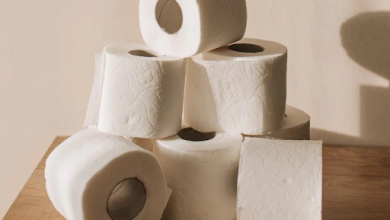Assessing Drano’s Impact on Sewer Maintenance

The maintenance of sewer systems is vital for the hygiene and functionality of our homes. Among the array of products available for unclogging drains, Drano stands out as a widely recognized solution. However, its use raises concerns about safety and long-term effectiveness. This article delves into the science behind Drano, its effectiveness as a drain cleaner, and explores alternative options for maintaining sewer systems.
The Science Behind Drano
Drano is a chemical drain cleaner formulated to dissolve organic materials such as hair, grease, and soap scum that clog drains. Its primary active ingredients typically include sodium hydroxide (lye) or potassium hydroxide and sodium hypochlorite (bleach). These chemicals work by generating heat and releasing gases that break down clogs into smaller, water-soluble particles.
Is Drano a Temporary Solution?
One of the primary concerns with using Drano is whether it provides lasting relief or merely a temporary fix. While Drano can effectively clear minor clogs, its chemical action may not fully remove debris, potentially leading to recurring blockages. Moreover, the liquefied clog can solidify again further down the drain, necessitating repeated applications.
How Effective is Drano?
Drano is generally effective for minor clogs caused by organic matter. It works quickly to dissolve blockages and restore flow within minutes. However, its effectiveness diminishes against more stubborn clogs caused by inorganic materials like mineral deposits or structural issues within the plumbing system.
Potential Negative Impacts of Drano
- Safety Concerns: Drano contains strong chemicals that can cause severe burns upon contact with skin or eyes. Ingestion or inhalation of fumes can lead to serious health issues.
- Environmental Impact: The chemicals in Drano, if not used responsibly, can pollute water sources and harm aquatic life.
- Pipe Damage: Prolonged use of Drano can corrode pipes, especially older or fragile plumbing systems. It may weaken pipes and joints, leading to leaks or costly repairs.
What Other Options Are There?
While Drano is readily available and offers quick results, there are safer and more sustainable alternatives for maintaining sewer systems:One of the primary concerns with using Drano is whether it provides lasting relief or merely a temporary fix. While Drano can effectively clear minor clogs, its chemical action may not fully remove debris, potentially leading to recurring blockages. Moreover, the liquefied clog can solidify again further down the drain, necessitating repeated applications.
- Mechanical Methods: Use of a plunger or plumbing snake (auger) to physically dislodge clogs without chemical intervention.
- Enzymatic Cleaners: These cleaners use natural enzymes to break down organic matter, offering a safer and environmentally-friendly option.
- Baking Soda and Vinegar: A mixture of baking soda followed by vinegar can create a foaming action that helps break down clogs naturally.
- Professional Plumbing Services: For persistent or complex clogs, consulting a professional plumber ensures thorough and safe resolution of sewer issues.
Conclusion
While is darno list remains a popular choice for household drain cleaning, its use comes with significant considerations regarding safety, effectiveness, and environmental impact.Drano is a chemical drain cleaner formulated to dissolve organic materials such as hair, grease, and soap scum that clog drains. Its primary active ingredients typically include sodium hydroxide (lye) or potassium hydroxide and sodium hypochlorite (bleach). These chemicals work by generating heat and releasing gases that break down clogs into smaller, water-soluble particles. Understanding the science behind Drano’s chemical action and its potential drawbacks is crucial for making informed decisions about sewer maintenance. Exploring alternative methods that prioritize safety and sustainability can contribute to healthier home environments and minimize the risks associated with chemical drain cleaners. Ultimately, choosing the right approach depends on the nature of the clog and the condition of the plumbing system, ensuring long-term reliability and peace of mind in maintaining sewer systems effectively.









